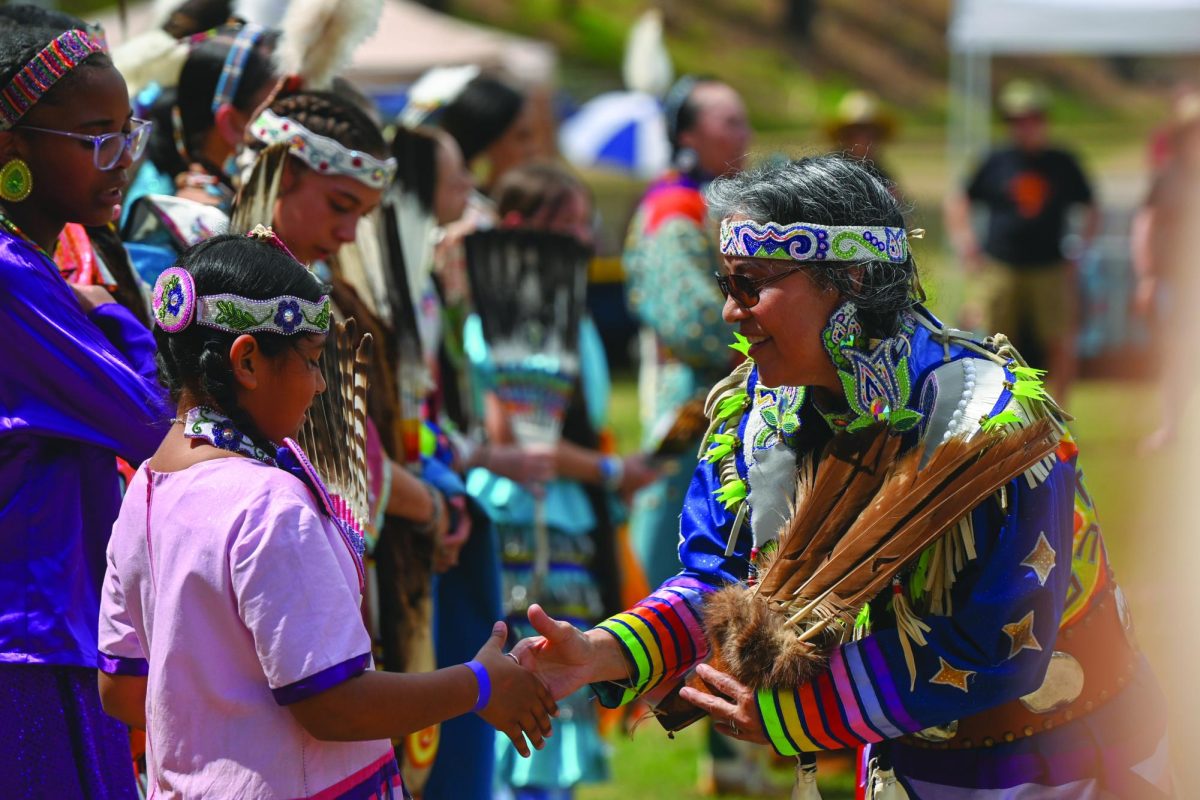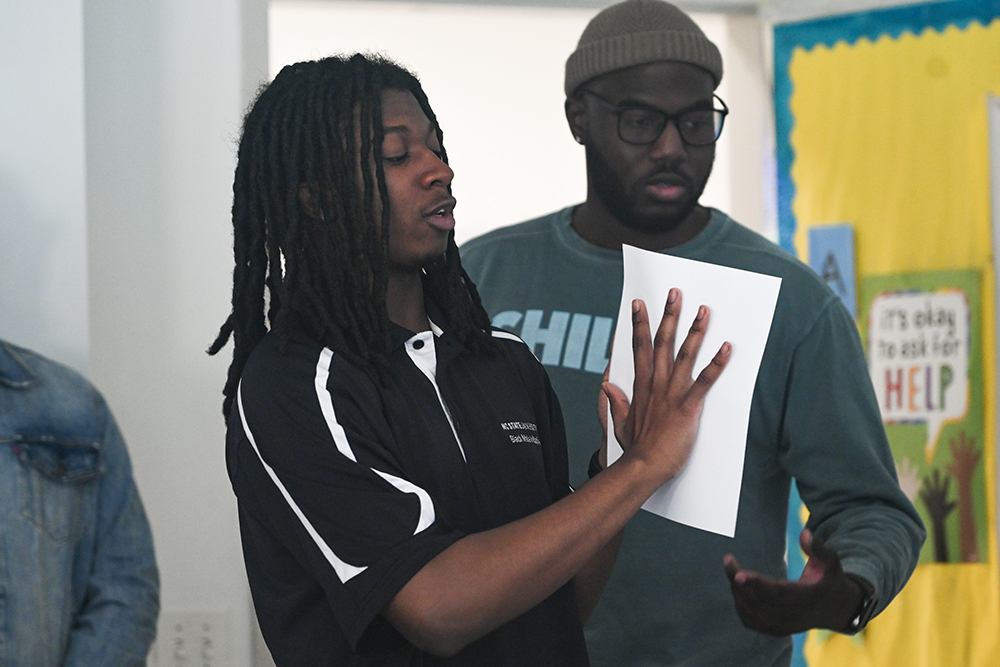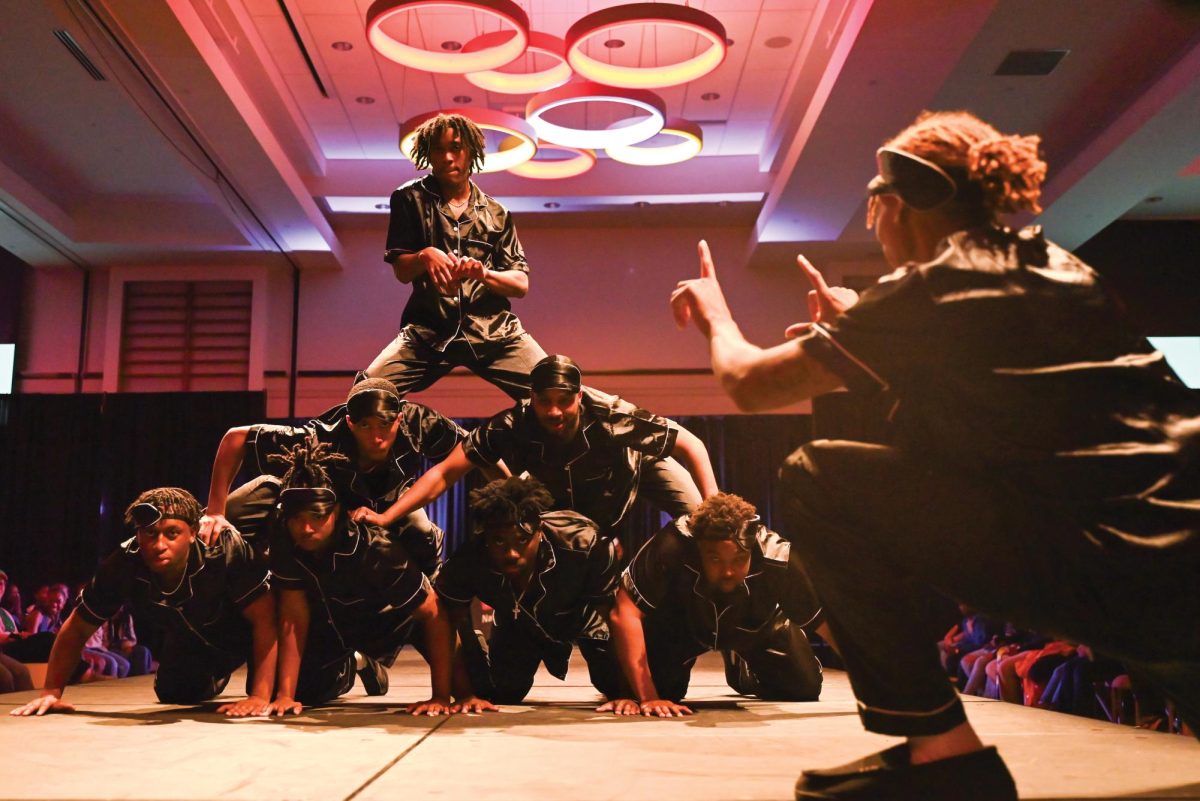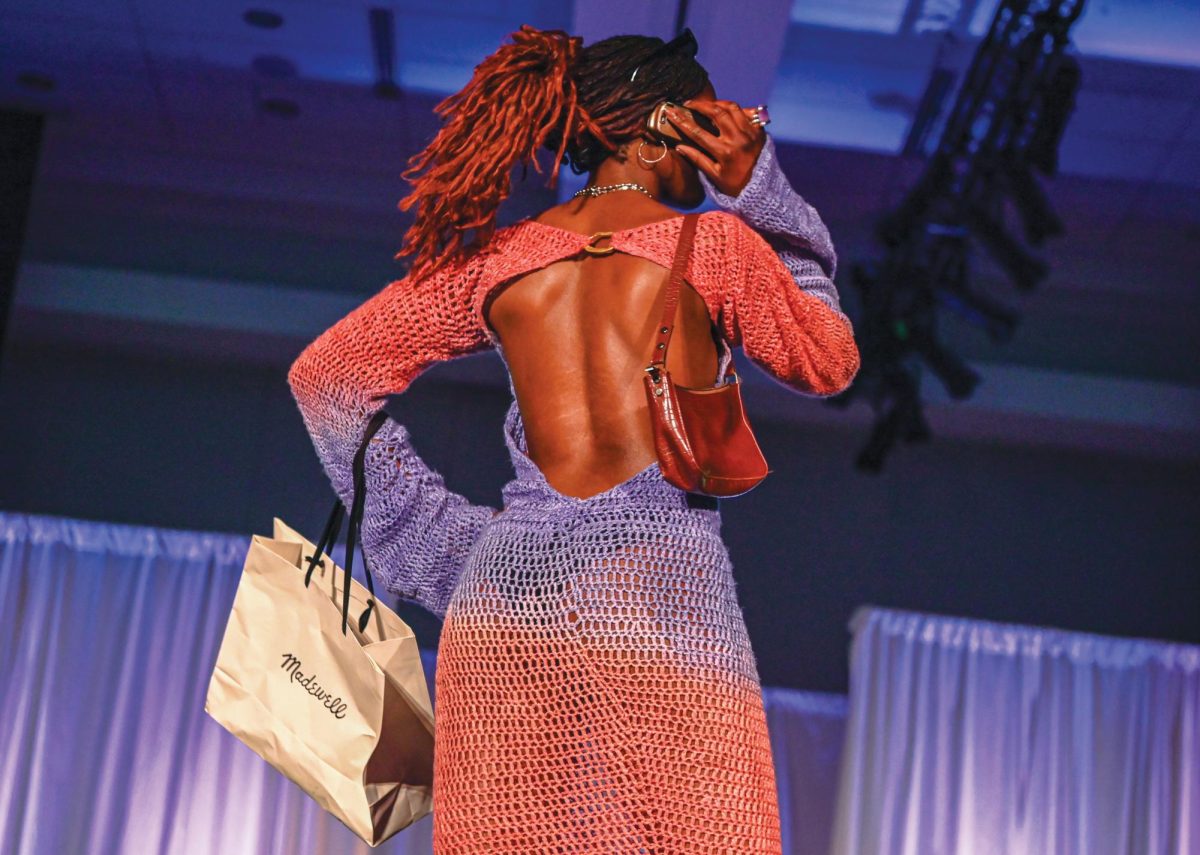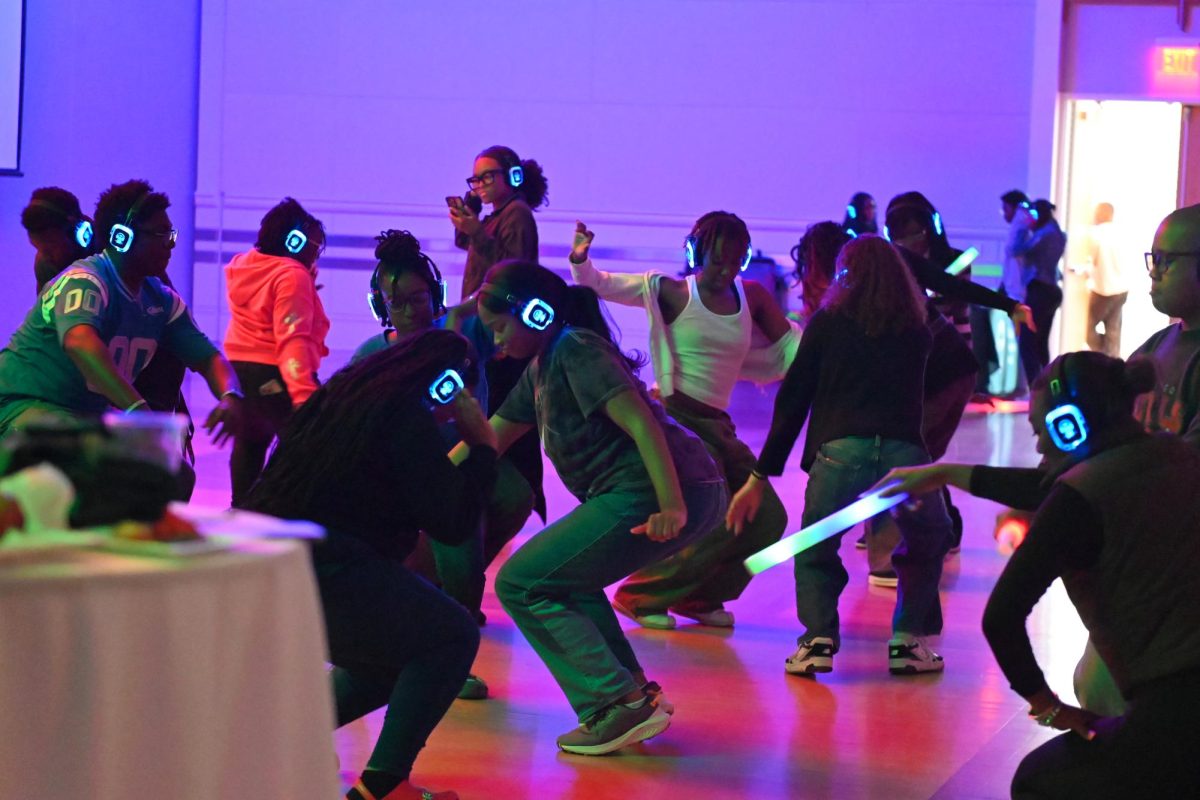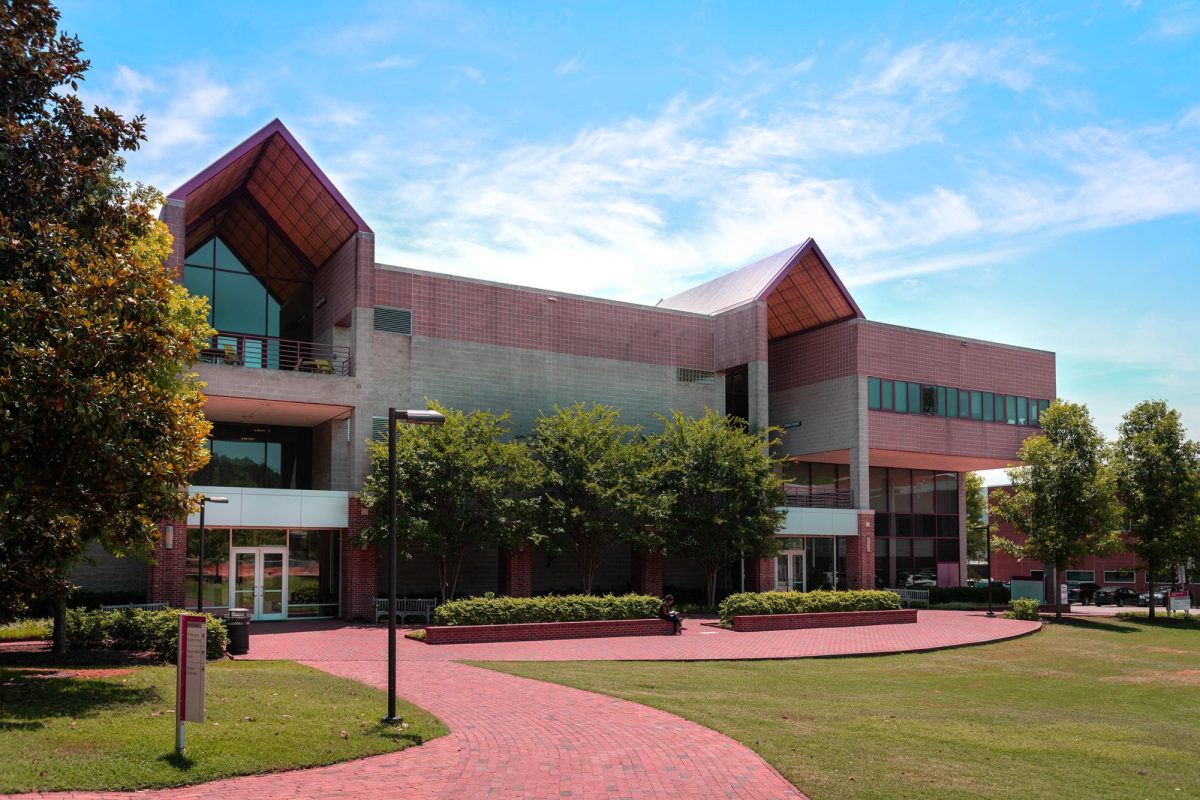NC State celebrated its 34th Annual Powwow (Powwow 2025) at Miller Fields on Saturday, April 5, 2025. Dancers, drummers, singers, vendors and community members from all over the country joined the Native American Student Association (NASA) and Multicultural Student Affairs (MSA) in celebrating the powwow.
What is Powwow?
Powwows are large gatherings where many Native American Tribes come together to celebrate their heritage through drumming, dancing, singing, food and more. All powwows are different, defined by the tribes coming together to host the gathering, but they share a purpose: unity.
“Powwow culture originated as a way to bring Native people together when a lot of culture was at risk. It encourages Pan-Indianism and [people] to come together,” said Gavin Bell, Assistant Director of MSA and member of the Lumbee Tribe. He continued, “A lot of individuals attending a collegiate powwow may not have been a part of Native community at all.”
Powwow 2025 is a part of a sequence of collegiate powwows hosted by other universities in North Carolina – including Duke, UNC Chapel Hill and UNC Pembroke. University powwows are often for education, serving as the first introduction to Native culture for many people.
“We’re very relational,” Bell began. “We’re not just relational within Indian community — we’re relational in general — so, we want folks to come out there and dance with us.”
On relationality — Trinity Locklear, President of NASA and Alpha Pi Omega Sorority Inc., the country’s oldest Indigenous Greek letter organization, and member of the Lumbee Tribe, said, “People come from all over — friends, family and faculty. It means a lot to see those faces at powwow, because it’s like, ‘Oh! All our work paid off!’”
“It really fills my heart to see everybody show up,” echoed Charlize Evans, Head Coordinator of Powwow 2025 and member of the Haliwa-Saponi Indian Tribe. Locklear and Evans served as Co-Chairs of the Powwow 2025 Planning Committee, and shared responsibilities such as fundraising, gathering volunteers, marketing and designing t-shirts. However, a lot more goes into planning the celebration.
The Nubian Message sat down with the student leaders to discuss the tremendous work it takes to put on such a large celebration.
“Powwow planning started at the beginning of the year,” began Locklear. “People are putting [powwow] as some small event that we’re setting up, when it’s actually huge. We have people from all over the state coming to this.”
“I delegated a lot of tasks. I did a little bit of everything,” said Evans, who kept things running smoothly during Powwow. “Part of that was organizing the powwow leaders, like the Master of Ceremonies and Head Dancers, and I was running around, making sure everybody was staying hydrated.”
All of NASA and MSA’s planning paid off in the end, and Powwow 2025 kicked off with smooth sailing.
Grand Entry
The festivities began promptly at High Noon with the MC, J.D. Moore, announcing the Grand Entry, calling on Miskwa Waya and War Paint to fill the space with dance and song, respectively.
Grand Entry, a procession in which dancers are officially introduced into the arena, was led by Head Male Dancer, Caleb Hedgepeth, and Head Female Dancer, Aminah Ghaffar. Following Hedgepeth and Ghaffar were all veterans and active-duty, Native or otherwise, who were invited into the arena for the Veteran Welcome.
The Veteran Welcome is a time to acknowledge and thank men and women “of stature” for their service. “Powwow culture broadly represents Indigenous culture, which holds honor and respect for the protectors and warriors of the people,” said Bell.
Joel Lowell then prayed for the community, showing gratitude to the Creator for bringing beautiful spring weather and a gorgeous crowd to NC State’s campus. He also thanked the drummers, dancers and singers, who form the “heartbeat” of Powwow.
Next, MC Moore called for the raising of the Eagle Staff, alongside the American and North Carolina State flags. Eagle Staffs are representations of Pan-Indianism, which was present on this soil before any American flag.
An eagle flew overhead as the colors were pushed (i.e., the Eagle Staff and American flags were raised) — a reminder that hard work pays off, and their connection to the Earth and the Creator is limitless.
Finally, Bell closed the Grand Entry by expressing gratitude to the Powwow Committee for their hard work and dedication. He also thanked everyone in the community who came out to show support and celebrate Native culture and heritage.
The Crafts
Powwow’s vendors are an integral part of powwow culture. Vendors can display their different merchandise, from belt buckles to mugs to earrings, representing different native nations, communities and tribes. The Nubian Message spoke to eight vendors selling their art and craft.
Big M Crafts
Big M Crafts is owned by vendors Mark and Elaine McGirt, husband and wife, members of the Lumbee tribe. Constantly flocked with customers, Big M Crafts had a constant stream of interested customers — drawn in by their open display of beautiful wood-carved bowls, alongside an impressive array of jewelry. McGirt shared, “My wife, she does the jewelry, and I do the woodturning. And it gives us extra income, plus the enjoyment, y’know, to do something with your hands.”
Long Swamp Trading
Long Swamp Trading is owned by the couple, Evangelyn Lowery-Jacobs and Perry Jacobs, from the Lumbee and Tuscarora tribes, respectively. The Jacobs are wholesale traders and deal primarily in Navajo-made jewelry and crafts, as well as Hopi and Zumi, out of an interest to share culture with others.
Long Swamp Trading directed The Nubian Message’s attention towards an eye-catching purple necklace made of Wampum, shell beads made from quahog clam, and explained Wampum’s historical-cultural significance. Wampum “was the first source of money in history for the East Coast,” the Jacobs’ explained. The shell beads were a significant symbolization of Native persons being able to trade with early European settlers. Long Swamp Trading shared that now, Wampum has become quite popular as people get back to culturally-significant kinds of jewelry.
Ta’chii’nii Creations
Ta’chii’nii Creations vending is run by mother and daughter, Cadence and Leann Yazzie, members of the Navajo tribe. We spoke with Leann about their Ta’chii’nii Creations in front of their ribbon-skirts, earrings and necklaces products on the table. The shop was started up by her mother, Cadence, through selling small things around town. Leann explained that her mother wanted to make jewelry and has been able to express herself through the shop. Cadence makes the majority of the art, although she doesn’t do it entirely alone, with some of Ta’chii’nii Creations’ ribbon skirts being made by Leann’s aunt and grandma. Leann shared, “It’s a great way of my mom expressing herself with jewelry and sharing her creativity in her own way.”
Over two years, their business has grown immensely. Now, Ta’chii’nii Creations caters to various powwows.
Laura Rodgers’ Ceramics
Laura Rodgers, a member of the Lumbee tribe, owns Laura Rodgers’ Creations. Laura Rodgers creates and sells colorful and functional porcelain pottery, ranging from sauce dishes to flower holders, to mugs and more.
Rodgers said she is heavily inspired by vintage wallpapers and iconography. Her creative process involves a lot of screen printing on porcelain, which, she shared, helps bring a lot of her past self into her unique, brightly colored pieces. Rodgers shared she used to be a fashion designer, specifically a print designer; and afterwards, during the pandemic, she needed a creative outlet. Following some exploration with clay, it dawned on her that she knew exactly what she needed to fill her creative outlet and followed her path/calling.
Tory Ellie Rosa
Tory Ellie Rosa is owned by Tori Alvarado, a member of the Lumbee tribe. Alvarado just started her gemstone jewelry-selling business in the past year. This was only their second in-person vendor showing, with their first being the week prior, making this experience super exciting.
Alvarado was happy to choose Powwows as her first vending option. She shares that her creative roots began from being immersed in Powwow cultures as a child, and gave her a unique experience which helped influence her vending journey. “That’s how I grew. We went to powwows and we shopped at powwows and you get to meet the artisans, and all the different work that they showcased… it gives something unique.”
Turtle Island Creations
Turtle Island Creations is owned by husband Dudley Lynch Sr., from the Haliwa-Saponi nation, and wife Julie Lynch, a member of the Nasemond nation. Together, the pair sells jewelry and woodwork. “[I’ve been to] Powwows all my life, ever since I was a baby. I used to dance; all my boys dance, and my grandkids dance,” he said. “Now, we just make our jewelry and woodwork stuff, and sell it at our powwows.”
Black Water Soap Works
Black Water Soap Works is owned by Mitch and Nena Lowry, both members of the Lumbee tribe. They sell a variety of soothing smelling all-natural soaps, lotions, herbal saps, salves, lip balms and more.
Together, they wanted to avoid chemical-made soaps, and his wife wanted to make it into a business. Step by step, the Lowery couple had an idea to keep improving their products, and learned how to better their many products. When it comes to their business, they are constantly refining the product. Mitch Lowry shared about his wife, “Her idea was not be satisfied with what we did yesterday.” Their thorough knowledge on soap-making processes shines clear through onto their high quality in smell, lather, consistency, and ingredients end-products .
The vendors not interviewed were Long Whisker, Battle Your Body, and Southern Jewels Co.
The Footwork
Powwow hosts a lot of different dances for a lot of different people – young and old, Native and non-Native. Dances are organized into categories, each with its own styles and adornments. We spoke with Bell to get the lowdown on the footwork.
“Traditional categories represent some of the baseline movements and dances that have been around since time immemorial but manifest in a more current context,” said Bell. “One of the staples in traditional regalia is one bustle, usually composed of eagle feathers that sit on the waist.”
In Women’s Traditional, “The footwork is light. There aren’t many fast movements, but it’s a very powerful dance. It is a representation of what it means to be a woman in Indian country, ” said Bell. “[Men’s Traditional] is supposed to represent that warrior spirit.”
Grass Dances have a lot of different origins depending on the tribe. In many older ceremonies, young boys stomped the grass to prepare the arena. Grass styles are often “rhythmic and smooth,” Bell said. He continues, “A lot of times, [Grass Dancing] is described as Indian hip-hop because of the footwork and motions associated with it.” Grass Dancing regalia is usually long and stringy, from head to toe.
Chicken Dance is a men’s category that mimics the flamboyant displays of roosters. According to Bell, Chicken Dances also allow for another layer of competition. “This is more of a country thing, but sometimes [two roosters going at it] is mimicked in the arena if there are two Chicken Dancers.”
Fancy Dancing is a newer style of dance meant to show off creativity, athleticism, intensity and skill. Whereas Traditional Regalia has one bustle or shawl, Fancy Regalia often has two: one on the shoulder and one on the hip. “[There are] lots of dynamic movements, [including] jumps and splits. It’s a little bit more of your performance dance, if you want to put it that way.”
“I am a Fancy Dancer. I’ve been dancing in powwows literally since I could walk,” said Evans. who specializes in Butterfly Dancing. “It represents the stages that Indigenous women go through. I’ve always been a dancer; it’s literally ingrained in me.”
Special Categories have prizes, with judges there to observe footwork and style. Head Dancers usually cannot compete for prizes; however, they do get to host a Special. Some Specials fulfill community needs. For example, during a Blanket Dance, a Head Dancer will take a lap around the arena with a blanket to accept community donations for a specific cause. University powwows often host Specials to acknowledge Native graduates.
“Jingle Dress Dancing is a healing dance,” said Bell. “If there are ailments in the community when a powwow happens, sometimes a Jingle Dress Dancer will dance to support somebody [who is sick or ill]. It’s a way of showing community support and coming around somebody in love, healing and compassion.”
Jingle Dancers also danced over George Floyd Square in Minneapolis after the murder of George Floyd in 2020 by former police officer Derek Chauvin. “They danced over that location because it brings healing, accountability and acknowledgement. It’s a very symbolic dance,” said Bell.
The origin of Jingle Dancing has been passed down generationally by oral tradition, so the story’s details differ from tribe to tribe. However, most tribes tell the story of a chief with a daughter who fell ill. The chief dreamt of the Jingle Dress and learned (or was taught) how to make the dress, what songs to play and how to dance in it. When he woke up, he had the dress made for her, and when his daughter started dancing in it, she was healed of her ailment.
Many powwows also invite community members to join dancers in the arena for Social Dances. “We did a lot more Social Dances,” Locklear said. “We only did one last year; it was really good to see that incorporated again. [Powwow 2025] has a basis in education, learning and fellowship, so it was a nice memory I have.” Round Dances and Mosquito Dances are examples of Social Dances.
Conclusion
The powwow tradition is rich and full of different Native cultures from all over the continent. The powwow has and will continue to be an essential part of student culture at NC State in and outside of the Native community.
In closing words, “I want to thank everyone who came. I want everyone at NC State to know that they are welcome to our powwow,” began Evans. “It’s okay to take those leaps, it’s okay to ask those questions. We are very much active on campus, and we always will be.”

